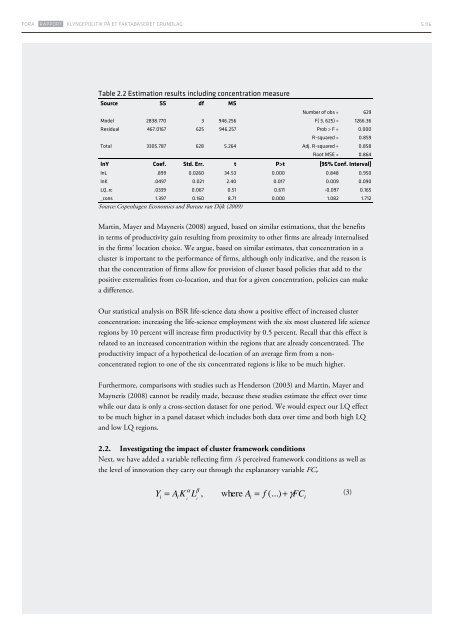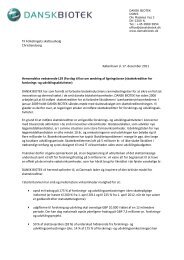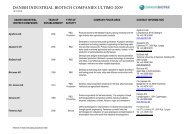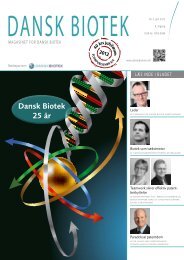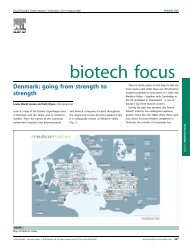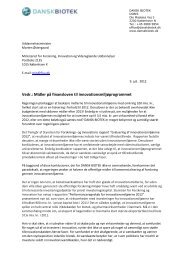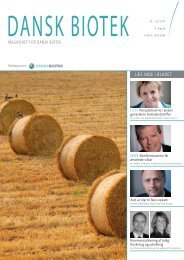Klyngepolitik på et faktabaseret grundlag - Dansk Biotek
Klyngepolitik på et faktabaseret grundlag - Dansk Biotek
Klyngepolitik på et faktabaseret grundlag - Dansk Biotek
You also want an ePaper? Increase the reach of your titles
YUMPU automatically turns print PDFs into web optimized ePapers that Google loves.
FORA RAPPORT KLYNGEPOLITIK PÅ ET FAKTABASERET GRUNDLAG<br />
Table 2.2 Estimation results including concentration measure<br />
Source SS df MS<br />
Number of obs = 629<br />
Model 2838.770 3 946.256 F( 3, 625) = 1266.36<br />
Residual 467.0167 625 946.257 Prob > F = 0.000<br />
R-squared = 0.859<br />
Total 3305.787 628 5.264 Adj. R-squared = 0.858<br />
Root MSE = 0.864<br />
lnY Coef. Std. Err. t P>t [95% Conf. Interval]<br />
lnL .899 0.0260 34.53 0.000 0.848 0.950<br />
lnK .0497 0.021 2.40 0.017 0.009 0.090<br />
LQ_rc .0339 0.067 0.51 0.611 -0.097 0.165<br />
_cons 1.397 0.160 8.71 0.000 1.082 1.712<br />
Source: Copenhagen Economics and Bureau van Dijk (2009)<br />
Martin, Mayer and Mayneris (2008) argued, based on similar estimations, that the benefits<br />
in terms of productivity gain resulting from proximity to other firms are already internalised<br />
in the firms’ location choice. We argue, based on similar estimates, that concentration in a<br />
cluster is important to the performance of firms, although only indicative, and the reason is<br />
that the concentration of firms allow for provision of cluster based policies that add to the<br />
positive externalities from co-location, and that for a given concentration, policies can make<br />
a difference.<br />
Our statistical analysis on BSR life-science data show a positive effect of increased cluster<br />
concentration: increasing the life-science employment with the six most clustered life science<br />
regions by 10 percent will increase firm productivity by 0.5 percent. Recall that this effect is<br />
related to an increased concentration within the regions that are already concentrated. The<br />
productivity impact of a hypoth<strong>et</strong>ical de-location of an average firm from a nonconcentrated<br />
region to one of the six concentrated regions is like to be much higher.<br />
Furthermore, comparisons with studies such as Henderson (2003) and Martin, Mayer and<br />
Mayneris (2008) cannot be readily made, because these studies estimate the effect over time<br />
while our data is only a cross-section datas<strong>et</strong> for one period. We would expect our LQ effect<br />
to be much higher in a panel datas<strong>et</strong> which includes both data over time and both high LQ<br />
and low LQ regions.<br />
2.2. Investigating the impact of cluster framework conditions<br />
Next, we have added a variable reflecting firm i’s perceived framework conditions as well as<br />
the level of innovation they carry out through the explanatory variable FCi.<br />
α β<br />
Yi Ai<br />
K L i i<br />
= , where<br />
A = f (...) + γFC<br />
(3)<br />
i<br />
i<br />
6<br />
S.116


